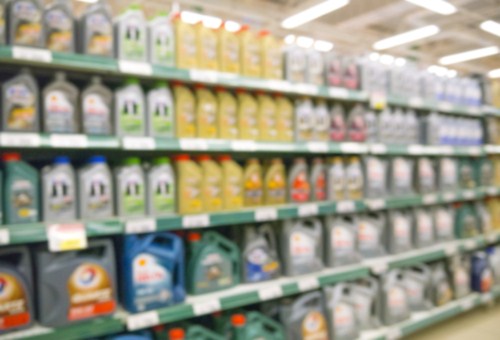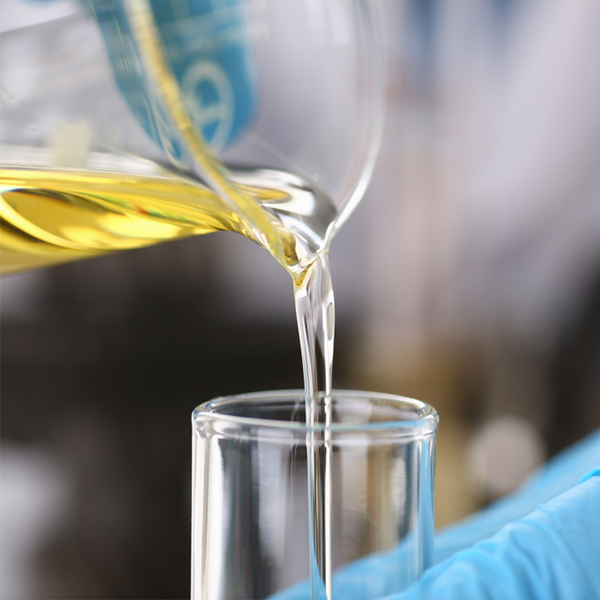
Regardless of whether a modern engine oil formulation is labelled as mineral, semi-synthetic, or synthetic, all modern oil formulations produced by reputable manufacturers such as Penrite Oil are marvels of chemical engineering. In fact, the basic lubricity of base oil, including synthetic base oils is so poor that without the addition of chemically engineered additives, no modern engine would last for more than a few hours at best, before seizing. In this article, we will take a closer look at engine oil additives in terms of what they are, what they do, and why they wear out, starting with this question-
Since base engine oils are very poor lubricants, oil formulators add a package of additives to a base oil to produce a lubricant that is reasonably stable in terms of its viscosity over a wide range of temperatures, and resists corrosion and the formation of harmful deposits of sludge and carbon, while at the same time, improving fuel economy and extending engine life.
Typical additive packages contain both organic and inorganic substances that collectively, perform three basic functions, these being to-
It must be noted though that while additive packages generally account for about 15% to 25% of the total volume of the packaged product, the actual additives, as well as their relative concentrations form a “recipe” that is proprietary to each oil formulator. Therefore, oil formulations can vary greatly between brands and oils that are recommended for the same application, which brings us to-

There are far too many substances that can be used as oil additives to list them all here, and since oil formulators never publish the actual substances and their relative concentrations in any formulation we will only look at some of the most commonly used substances and what their purpose in any given oil formulation is, starting with-
Polar additives
Polar additives encompass a huge range of substances, and it is easier to think of these additives as anything that dissolves in water, or that can be dissolved by water, than to list them all here.
In practice, these additives can be dispersants, detergents, and/or metal deactivators, and they work by enveloping contaminant particles either to keep them in suspension in the oil, or to prevent agglomeration of the particles, which is the first step in the formation of sludge. Polar additives are typically sacrificial, in the sense that they are considered to be “used up” when there are no polar additive molecules left in the lubricant to envelop contaminants.
Anti-wear additives
Also known as friction modifiers, these additives reduce friction and prevent direct metal-to-metal contact by a complex chemical reaction with metal that forms a thin protective film between wear surfaces. In practice, this film has a much lower shear strength than metal, meaning that instead of the metal surfaces ripping pieces out of each other, the lubrication film is consumed sacrificially until all the anti-wear additive molecules have been consumed.
Typical anti-wear additives include zinc dithiophosphates, various organic and/or acid phosphates, organic sulphur and chlorine compounds, sulphurised fats, sulphides, and disulfides.
Extreme pressure additives
As a class, extreme pressure additives are chemically more aggressive than other anti-wear additives in the sense that they bond to metal surfaces more strongly. Thus, the protective film these additives form is stronger than a similar film formed by “normal” anti-wear additives, and is generally activated at higher loads and temperatures than milder anti-wear compounds.
As a practical matter, extreme pressure additives serve as a sort of “back-up” system for the lubrication film formed by other anti-wear agents, and provided this first hydrodynamic or elastohydrodynamic lubricating film is maintained, the extreme pressure additives will remain inactive. Put in another way, extreme pressure additives will only become active under boundary lubrication* conditions.
*Boundary lubrication is lubrication by a liquid under conditions where the solid surfaces are so close together that appreciable contact between opposing asperities is possible. The friction and wear in boundary lubrication are determined predominantly by interaction between the solids and between the solids and the liquid. The bulk flow properties of the liquid play little or no part in the friction and wear behaviour. Source- W.E. Campbell, Boundary Lubrication, Boundary Lubrication, an Appraisal of World Literature, ASME, 1969, pp. 87-117.
Although extreme pressure additives are most commonly found in gear oils, some special application engine oils contain significant amounts of extreme pressure additives. One example of this is some VAG-group vehicles that use high-pressure, gear-driven diesel injection pumps.
However, it must be noted that extreme pressure additives generally consist of either large molecules, or long and complex molecular chains that are “chopped up” under boundary lubrication conditions or other types of shear forces. Therefore, these additives are sacrificial, and contribute to changes in the base oil’s viscosity as the extreme pressure additives are broken up.
Viscosity improvers and pour-point depressants
The purpose of viscosity improvers and pour-point depressants is to prevent oil “thinning out” too much at high temperatures, or “thickening up” too much at low temperatures. In practice, the waxy constituents of the base oil start to form large and complex crystals at low temperatures, before linking up to form a sort of barrier that prevents other constituents of the oil from flowing freely.
Conversely, at high temperatures, the lattice of wax crystals collapses, which is what causes oil to “thin out”. To combat this, viscosity improvers can be thought of as “coiled springs” that expand at high temperatures in a process that mimics the effect of agglomerated wax crystals (in cold oil), thereby maintaining or increasing the base oil’s viscosity at high temperatures.
Typical viscosity improvers include various polymers and copolymers of methacrylates, butadiene olefins, and alkylated styrenes.
Anti-foaming agents
These typically include silicone-based polymers and several organic copolymers that reduce the surface tension of oil bubbles, which causes them to collapse, thereby preventing persistent foam from forming throughout the lubricant volume by the whipping action of the crankshaft and other rotating components.
Anti-oxidants
Oxidation can be described as a general attack by atmospheric oxygen on many of the constituents in base oils and while it happens continuously at all temperatures, the process is greatly accelerated by high temperatures in combination with the presence of moisture, metal wear particles, and several other contaminants in engine oil.
Since anti-oxidants are sacrificial additives, depletion of these compounds ultimately causes several types of acids to form, which eventually results in the formation of sludge and a “thickening” of the base oil that contributes to accelerated mechanical wear of engine components.
Typical anti-oxidants include zinc dithiophosphates, phenols, aromatic amines, and sulphurised phenols.
Metal deactivators
Since metal is subjected to attack by atmospheric oxygen, the process of corrosion in an engine acts as a catalyst to accelerate the oxidation process of both metallic engine components and metal ear particles in oil. To combat this, metal deactivating additives like organic nitrogen, sulphur, amines, sulphides, and phosphites are used to combine with metallic ions to form an inert film on metal surfaces that prevent metals from coming into contact with oxygen.
Detergents
The function of detergents like metallo-organic compounds of barium and/or calcium, as well as magnesium phenolates, phosphates and various sulfonates is to react with sludge and the precursors of varnishes and gums to keep these substances in their dissolved states, thus preventing their deposition on internal engine surfaces.
Corrosion inhibitors
Corrosion inhibitors work through a preferential adsorption of the additive by metal surfaces to form a protective film on the surface that prevents attack by oxygen, moisture, and corrosive acids in the oil.
Typical corrosion inhibitors include zinc dithiophosphates, various fatty acids, metal phenolates, basic (simple) metal sulfonates, and amines.
Tackiness agents
The principal purpose of these additives is to act as a sort of “glue” that makes the lubricant “stick” to metal surfaces. Cases in point would be to prevent the lubricant from being flung off rotating parts like camshafts, and to maintain a lubricating film between wear surfaces when the engine is not in operation to prevent or limit mechanical wear during cold start-ups.
Seal swell agents
As the name suggests, seal-swelling agents like some organic phosphates and various halogenated and/or aromatic hydrocarbons react with the elastomers that some seals and gaskets are made of to cause a slight swelling of the elastomeric material to assist in preventing oil seeping past the seals and gaskets.
NOTE: It must be noted that in many cases, proprietary oil additive packages from one formulator could contain substances that are not compatible with some substances used by a competing formulator. In practice, this often means that mixing oil from different suppliers could cause sludge to form when detergents are not compatible, or corrosion could be accelerated when rust inhibitors are not compatible. For these reasons, it is critically important NOT to mix lubricants from different suppliers and/or oil formulators.
Also note that this list of additives includes only the most commonly used substances, and it is therefore neither exhaustive, nor representative of all additives used in all automotive lubricants. However, from the perspective of automotive technicians, this list should serve to illustrate the basic operating principles of engine oil additives, which brings us to-
Where oil additive packages are concerned, it is very important to recognise that most additives are sacrificial, and therefore get used up or depleted in various ways, which include the following-
Decomposition
In some chemical reactions, such as oxidisation, some additives like anti-oxidants, anti-foaming agents, and detergents are deactivated, or decomposed by the very processes the additives are designed to prevent or control. When these sacrificial additives are depleted, corrosion caused by oxygen and corrosive acids is accelerated, which may affect the efficiency of some other additives.
Adsorption
While adsorption onto and into metal surfaces removes some additives, more additive molecules are removed from the lubricant volume when water molecules/droplets and solid particulate matter is enveloped by the additive. As a practical matter, some additives reach a saturation point, beyond which no more water or other contaminants can be enveloped.
Separation
Saturated additives can settle out of the base oil, or additives can be filtered out of the base oil when the transfer of mass between contaminants and additive molecules creates particles that are big enough to be trapped by the oil filter during normal engine operation.
Once depletion of additives reaches a critical point, oil viscosity increases, corrosive acids start to form and attack metal surfaces, and mechanical wear is greatly increased. More importantly though, under real-world conditions, the depletion of additives is not linear: once the process of depletion has started, the process accelerates exponentially in a domino effect as the depletion of one additive increases the load on the remaining additives.
For these reasons, it is critically important to use only lubricants from reputable suppliers like Penrite Oil, since all the oil formulations they supply are guaranteed to comply with all industry and manufacturers’ specifications.
From the above, it should be obvious that a lot of advanced chemical engineering goes into formulating modern lubricants. In the case of Penrite Oil, all required additives are present in the correct proportions, and the addition of aftermarket “oil conditioners” will therefore not improve the basic formulation of the lubricant.
In fact, since base oils have a finite capacity to absorb additives the opposite is almost certainly true, and any supplemental additives could actually deactivate, or interfere with the operation of some additives already present, which can have unpredictable and often drastic results when a lubricant fails to work as expected.